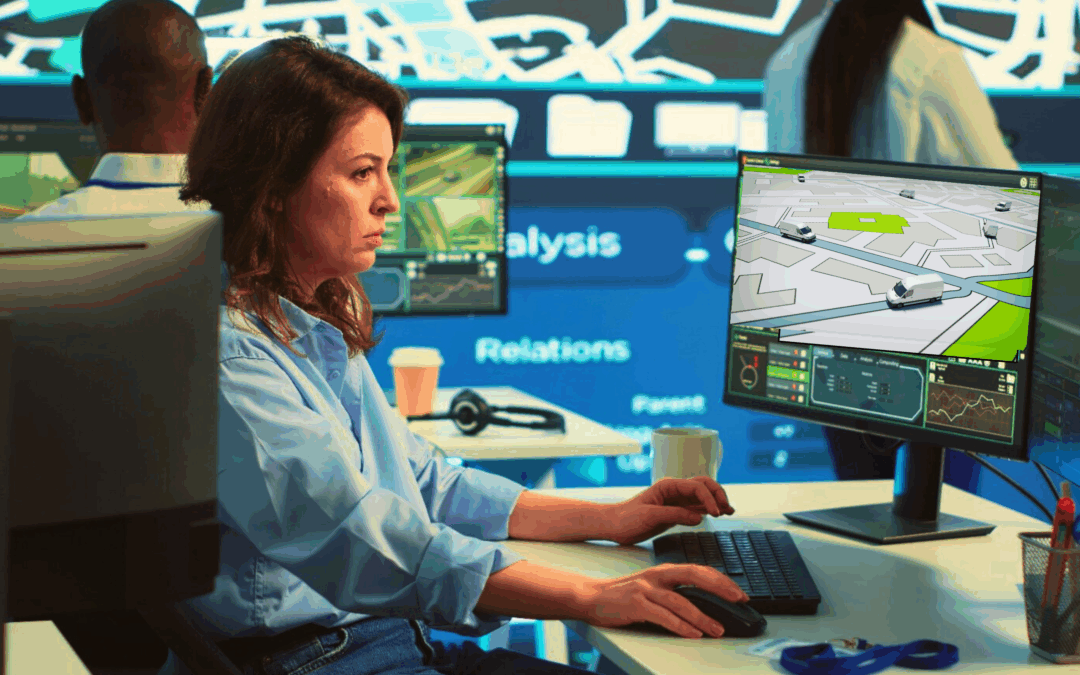For more than two decades, enterprises have trusted ERP systems and legacy platforms to drive operational control. These systems have performed admirably in a world where data is keyed in by humans, where events are captured through barcode scans, and where workflow logic is built around discrete, manual inputs.
But that world is changing. Rapidly.
We’ve entered a new phase—where real-time sensor data, not human input, is becoming the dominant source of truth on the ground. Sensors are no longer optional; they are embedded in operations. RFID tags, BLE devices, temperature sensors, and event-driven IoT streams provide a continuous view of assets, goods and people in the physical world. The data is rich. It’s real-time. And it’s relentless.
The challenge? Most legacy systems don’t know how to assess this data quickly and convert into actionable insights in real-time.
Legacy systems were built around optimizing workflows. They were never architected to ingest, interpret, or act on ambient sensor data. Their data models, event queues, and workflows simply weren’t designed to process autonomous inputs that come from the environment instead of a user. As a result, many enterprises are operating with an invisible wall between their sensor infrastructure and their operational intelligence.
Businesses—Fortune 500 manufacturers, logistics providers, and global retailers—have invested heavily in sensor infrastructure. Yet, their core systems remain fundamentally blind to the data being generated in real time. Why? Because those systems weren’t built for it. They were architected for structured input, keyed by humans, not ambient signals flowing from the physical world.
This misalignment is more than a technical inconvenience. It is now a source of operational drag. Systems can’t respond fast enough. They cannot manage large quantities of data. Actual events go unnoticed. Anomalies or downtimes are caught late, after they’ve caused significant damage. And despite large investments in automation, enterprises still rely on human intervention to interpret sensor data and feed it back into the system.
We’ve seen organizations try to solve this in one of two ways.
The first is to rip and replace. Start from scratch with a tailored platform built for sensor-first environments. Build entirely new workflow management platforms that understand sensors natively. Rearchitect workflows, rewire logic, rebuild integrations. It sounds appealing—until we realize that we’d have to replicate years of operational logic, compliance rules, and integrations that current systems already handle. This also means convincing stakeholders within and outside the enterprise, to migrate everything they’ve spent years perfecting. In most enterprises, replacing SAP or Oracle is just not doable.
The second path – one that we built InThing to enable — is fundamentally different. We believe the quickest, smartest, most secure and cost-effective approach is not to replace legacy systems, but to augment them with a smart, sensor-aware software layer.
At InThing, we don’t ask enterprises and businesses to rip out SAP, Oracle, or any custom-built supply chain stack. We don’t touch existing workflows. Instead, we integrate seamlessly with them, adding a real-time intelligence layer that understands what sensors are saying—whether that’s a tag moving across a dock door or a temperature spike in transit. We convert that ambient data into structured, actionable intelligence in real-time, in a format which current systems can digest. No disruption. No reengineering. Just clarity.
This isn’t conceptual. It’s deployed across several clients in manufacturing, warehouses, logistics, retail and education.
One of our enterprise clients—operating in a high-volume logistics environment—hasn’t experienced a single mis-shipment in six years. That level of precision is not possible with manual input, batch processing, or barcode scans alone. It only happens when systems can respond to what’s happening as it happens.
Our value proposition is rooted in make existing legacy systems sharper—without asking businesses to rebuild them. Our highly available, real-time event engine works with existing business infrastructure, tracking assets and goods through the supply chain leveraging RFID hardware, all within the existing enterprise stack. We’ve done the hard work of making legacy systems compatible with modern data flows—so legacy businesses don’t have to do it themselves.
In a world where operational latency is a competitive disadvantage, business systems need to think and react like business does—in real time, with context, and without waiting for manual updates.
Sensor intelligence isn’t a futuristic idea. It’s a present-day requirement. At InThing, we’ve made it possible to adopt without disruption.






